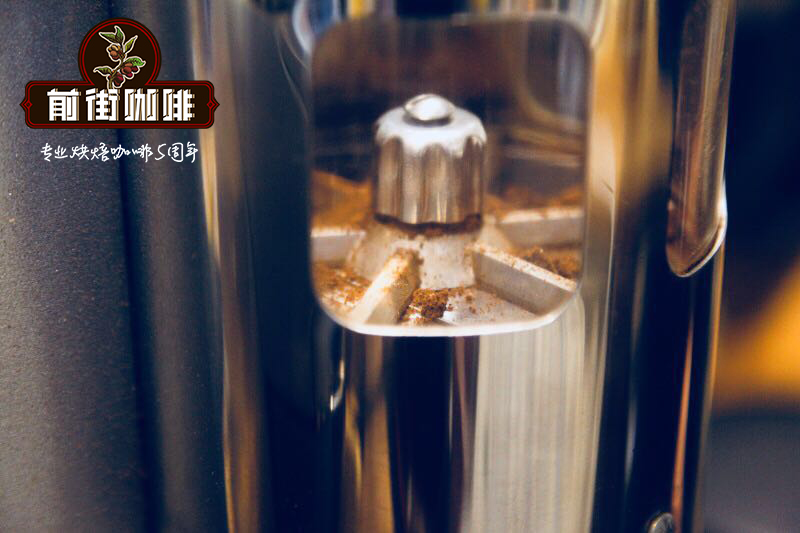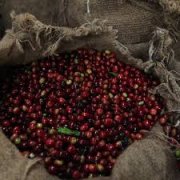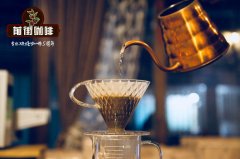The award-winning Queen's Manor of Brazil and the recommendation of baking and cooking
Recommendation of Brazilian Queen's Manor and Baking and Cooking

FazendaRainha (Queen's Manor), which covers an area of 280mu, is located in Vale da Grama, an ancient volcanic valley in Brazil. In 2011, the manor won the championship in the COE competition in Brazil. There are 200 mu of Huangbo coffee trees planted in the manor, and the undulating mountains make it impossible for large-scale mechanical harvesting, so all the coffee here needs to be harvested by hand. The manor is washed with water, dried by a drying rack and baked by a dryer, and mechanical screening is supplemented by manual screening. a lot of work requires farm employees to live on the farm all year round. However, all employees and their families can enjoy housing, health care and education benefits here.
The estate is a member of a local Grama Valley medium-sized farm organization that mainly exports boutique coffee from bourbon varieties. The organization's office is located in nearby Pocos de Caldas, and they also have a national cup testing laboratory with a large warehouse. The organization also works with local universities and other institutions to conduct research, including Lavras University, where the famous Dr. FlavioBorem is from the university's agricultural research center.
Raw bean analysis
This bean is 100% yellow bourbon, and its provenance can be traced back to Reunion Island, Madagascar, where bourbon originated. French explorers brought coffee here for the first time in the 18th century, so this breed is also called French missionary. In the 20th century, it was brought to the African continent and then introduced to Brazil, and its derived varieties are now all over Africa and America. The fruit of the bourbon species grown in Brazil is yellow because of its recessive genes.
The bean is treated with the Cerezadescascado method invented in Brazil, a natural treatment similar to honey treatment that makes the coffee taste more round, somewhere between washing and full-sun treatment. During the treatment, a small amount of water is used to remove the pulp and peel, and then the coffee is dried directly on the drying rack, which is constantly turned over to ensure that all the coffee is exposed to the sun. after several days of drying, mechanical drying is carried out to achieve the appropriate water content.
The nature of the treated coffee beans is relatively stable and can be preserved for a long time. The beans have high density, low water content and large coffee particles. 98% of the beans can reach more than 16 mesh, and half of them can reach 18 mesh.
Baking analysis
Raw beans have solid texture and good flavor, with slight aromas of orange peel and spice.
Moisture content of raw beans is 9.9%.
The water content of the beans is relatively low, which makes the beans have a strong ability to absorb heat, so the baking plan is to put the beans into the beans at 200 degrees, then the fire and small throttle will speed up the dehydration, and when the dehydration stage is over, open the stroke door and medium heat to let Maillard react. Don't be in such a hurry, close to an exploding tail.
After baking 4 times, the final choice is between 1: 45-2 after the end of the explosion. Taste with obvious sweetness, but not so boring sweet, with a hint of lemon aroma in the background, this aroma is more prominent in the wet fragrance stage, the latter shows an obvious taste of dark chocolate, the overall feeling is more round, while reflecting the characteristics of Brazil as a whole, without losing liveliness.
Cooking analysis
The result of extraction by Bonavita trickling filtration is completely different from that of Italian formula. I like the smoothness of the first bean, while my colleagues prefer the complexity of the second bean. The second bean has a high content of insoluble matter, which indicates that I may have overextracted or misweighed it. But either way, it is generally smooth, with a rich chocolate flavor, which is basically in line with our expectations for Brazilian coffee in the honey-treated process: roasted almonds, fudge, caramel and baked spices.
Important Notice :
前街咖啡 FrontStreet Coffee has moved to new addredd:
FrontStreet Coffee Address: 315,Donghua East Road,GuangZhou
Tel:020 38364473
- Prev

Brazilian coffee characteristics, Brazilian coffee bean flavor, how to drink Brazilian coffee?
Professional coffee knowledge exchange more information about coffee beans please follow the coffee workshop (Wechat official account cafe_style) Brazilian coffee, which generally refers to coffee produced in Brazil. There are many kinds of coffee in Brazil. Like other Arabica coffee, Brazilian coffee is called Brazils to distinguish it from Milds coffee. Most Brazilian coffee is unwashed and sun-dried, according to the name of the state of origin and
- Next

The evolution of Pacamara coffee beans and the characteristics of Pacamara coffee beans.
Professional coffee knowledge exchange more coffee bean information Please follow the coffee workshop (Wechat official account cafe_style) many years ago, most buyers in the boutique coffee industry shunned large-grain coffee, such as Maragogype and Pacamara. Large-grain coffee grown at low and middle elevations usually showed less pleasant vegetables or woody condiments.
Related
- Detailed explanation of Jadeite planting Land in Panamanian Jadeite Manor introduction to the grading system of Jadeite competitive bidding, Red bid, Green bid and Rose Summer
- Story of Coffee planting in Brenka region of Costa Rica Stonehenge Manor anaerobic heavy honey treatment of flavor mouth
- What's on the barrel of Blue Mountain Coffee beans?
- Can American coffee also pull flowers? How to use hot American style to pull out a good-looking pattern?
- Can you make a cold extract with coffee beans? What is the right proportion for cold-extracted coffee formula?
- Indonesian PWN Gold Mandrine Coffee Origin Features Flavor How to Chong? Mandolin coffee is American.
- A brief introduction to the flavor characteristics of Brazilian yellow bourbon coffee beans
- What is the effect of different water quality on the flavor of cold-extracted coffee? What kind of water is best for brewing coffee?
- Why do you think of Rose Summer whenever you mention Panamanian coffee?
- Introduction to the characteristics of authentic blue mountain coffee bean producing areas? What is the CIB Coffee Authority in Jamaica?

